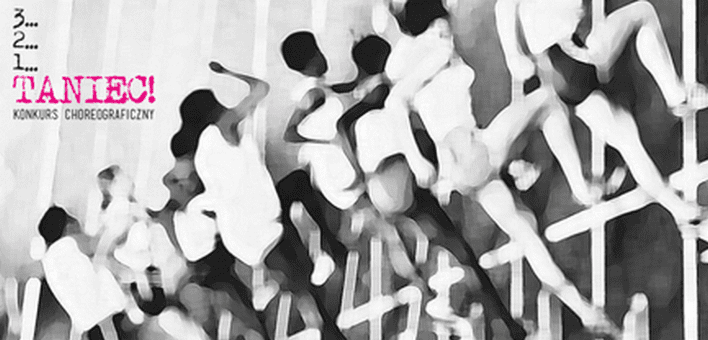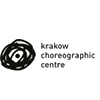Review after the 7 edition of 3…2…1…DANCE!
With great pleasure we encourage you to read the text after 7th edition of 3…2…1…DANCE! choreographic competition written by Natalia Wilk.
To appreciate, not to judge.
About democracy in the contest.
The 3…2…1…DANCE! choreographic competition
Krakow Choreographic Centre
4th-5th March 2017
The idea of preserving democracy in situation of the contest may not be adequate and may not correspond to the practice of rules, where we select the best. Meanwhile The Choreographic Competition 3…2…1…DANCE! organized by Krakow Choreographic Centre measures with such understanding of competitiveness, which does not choose the best, but appreciates individuality and diversity. How the implementation of such assumptions looks in practice we saw at this year’s edition of the contest which took place at 4th and 5th March 2017 in Nowa Huta Cultural Centre. The seventh edition of the 3…2…1…DANCE! choreographic competition turned out to be sentimental and in many ways unique. Organized from seven years competition is addressed to choreographic artists from all of the word. Of the nearly 50 submitted applications, the record number of 16 were qualified.
The first selection is already an introduction to the characteristics of the meeting – the democracy in the competition. It seems that organizers are taking care of it in the consistent way. In 16 qualified works we’ve seen a diverse mix of choreographic forms. The program was arranged without stylistic preferences, without specifying a particular choreographic practice. Participants came from different countries and numerous of dance contexts. Therefore the jury’s choice was not easy. It’s not a simple task to distinguish one work among the broad and not necessarily comparable range of proposals.
This offer told us to focus on the one basic criterion – choreography, including how it could be understood and in accordance with its individual defining – what aspects of presentation could possibly bring the award.
The decisions of jury is another example of transparency and democracy principles implementation. Each of the jurors gives her/his awards individually and without consultation with the rest of jury members. Also without need to convincing anyone to her/his right. Jury had two available prizes and according to their own preferences, they could give first or second prize to these choreographers, which they personally wanted to highlight.
On the one hand the financial value of a single prize is lower than if it were e.g. only three prizes in the whole contest, but on the other hand – a chance to reward many authors is much higher. This formula helps to alleviate the competitiveness and eliminate the race to success.
A record number of prizes were granted this year. Three jurors awarded various participants. Agata Moląg, as a representative of KCC, admitted the award, which did not coincide with the choices of other jury members. And the most democratic prize, given by the audience with the majority of votes, went also to presentation, which had not been awarded before.
On the 5th March we saw therefore eight presentation, which is the record number in the history of the competition.
It is all not about selecting the best, but noticing the potential. In the situation, when the level of the works, despite of their diversity, is comparable – it seems fair solution. It is worth noting that we are talking about the contest, which presents three possible forms: solo – 6 minutes, duet – 9 minutes or trio – 12 minutes. The time limit makes the choreographers condense their thinking about presentation.
Aleksandra Bożek-Muszyńska turned out to be for several times unbelievably aware of this. Every time she took part in the contest, she was receiving several jury prizes, finally reaching the record number of seven. Organizers found it a little bit distasteful and took it with a pinch of salt, but seriously at the same time. They asked her not to come to the contest as a participant. That is why this year Bożek-Muszyńska presented her new work “Dziki Bożek” out of the competition. In sentimental way she appeared at the contest, establishing the institution of guest of honor for the first time.
The choreography can be understood and read on many levels. The jury members after they had finished their work told about how they understood it and what was their way of estimating while they were awarding the prizes.
Marysia Stokłosa, who was a juror for the first time ever mentions that she didn’t find the courage to show her own works during the any contests. They were too important to her to expose them to someone else’s evaluation. All the more she appreciates all participants. Among the works, which caught her attention, she was trying to draw out all the components and evaluate them in zero-one method in various categories, such as: composition, choreographic choice about logic of whole work, embodiment and technical quality. Guidelines had a task to objectify the choice, which of course remained autonomous. She gave the first prize to Zofia Tomczyk “Te echo de menos. Mano”
for having trust in herself. For the practice of movement that starts a the place of “weird sensations”. For her soft presence, which allows for a rare closeness between the performer and the audience
and second prize for April Veselko „What does the body dream”
for entering deep into a moving state. Sharp, film-like use of space. Intense body that loses shape, trembles, vibrates and is not afraid of taking risk. For successfully creating a dream-space and dream-time in six minutes.
Carlo Massari a few years ago was himself a participant of the contest. Today he runs his own dance company and returns to Krakow as a member of jury. When he is asked about his strategy of choosing, he emphasizes his interest in dance, which wants to communicate and is characterized by an intensive need to express. He pays a special attention to the conscious use of music and lights. And although these are guidelines, which can not be objectified, using the power of independent choice he gave the first prize to Omar Karabulut “Terminal B”, motivating his choice by the words:
An hero, an apnea, a passage between empty and full, an extasy, a combined adult language supported by a young body. An honest body in nudity with its fragilities and purity. A point of non return.
The second price went to Helena Ganjalyan (MELT), whose work Massari described as:
An hipnotic work bring us to distant world. A body in constantly research solution to survive itself. A deep dramaturgy supported by a strong body. A metamorphosis, a controversial masterpiece of simple deformity.
Matej Matejka earnestly repeated that “he sticks to his background”, which was definitely a drama theatre. He rewarded the proposals, where, as he claimed, “he had forgotten that he is a juror and he had not wrote any notes”. The complexity of the works he saw surprised him as he expected something he called “pure form of movement”. He gave the first prize to Agnieszka Bednarz and Agata Meyer- Lüters for “I am Helena”
for creating complex and original art, for highly developed skills and authentic presence on stage
and second prize to Marion Alzieu for “This is not a white woman”
for courage and incredible energy. For the purity and precision of movement and the authenticity of expression, which created such moving stage imagery.
The honorable prize from KCC represented by Agata Moląg went to Agnieszka Janicka for “Lead Me”
for the peace of mind, harmony of movement and consistency in letting the body speak.
Perhaps the most important moment of the competition is feedback, which is provided to all participants. Immediate opportunity to hear what was observed in your work, what is worth rethinking, what attracted the attention — is a constructive reference confirming that to talk about dance and create the language to describe it and analyze it is important, not to say crucial. Feedback is not an evaluation. As Marysia Stokłosa indicated, citing the words of Lisa Nelson – “where is my opinion, there my fantasy starts”. During the feedback we emphasize what actually happened, with no discussion about the tastes. It is hard to judge whether sweet or salty taste is better or if better is funny than serious, as Stokłosa says.
I also can not personally refrain from noticing that contest’s office is full of women. Perhaps democracy of 3…2…1…DANCE! and creative atmosphere are the result of the team!
In addition to the atmosphere it is important to notice that the competition is a big dose of knowledge. It is not just an overview of what is produced nowadays as a part of widely understood choreography, but seems like a space to discuss the process, understanding of choreography. The jury’s suggestions for potential futures editions participants indicates:
Marysia Stokłosa: to do your own and follow your interests while practicing the skills of filtering what is told about you!
Carlo Massari: do not concentrate on making the production, but treat the work as a stage in the process of creating
Matej Matejka: just participate and give yourself a chance to hear the feedback!
Agata Moląg: take care of good recording! Bad one can determine that your work will not be qualified to the contest and can destroy all the effort put into creating the choreography.
In atmosphere, where we appreciate rather than evaluate, phenomenon of the contest is very important. The forms, which are shown here are short – they have no chance for filling up full evening program in any performative institutional space. Such competitions are the opportunity to present a piece of your work that can be developed during the residency and further artistic collaborations. It is important that people who can indicate the potential for further work would appear in the contest. As Agata Moląg sums up – the number of applications, the places where they come from, clearly indicate the need to organize such meetings!
I also believe that the way how organizers resigned from the evaluation to the form of appreciation during 3…2…1…DANCE! is an aspect, that can convince next artists to apply to the contest. It is not often to have a possibility to compete where arbitrarily imposed competition context is eliminated 3…2…1…DANCE! breaks this convention with the great success.
Natalia Wilk
photo: Katarzyna Machniewicz

award from Agata Moląg for the solo of Agnieszka Janicka, 3…2…1…DANCE!

Agata Meyer-Lüters i Agnieszka Bednarz, 3…2…1…DANCE!

Zofia Tomczyk, 3…2…1…DANCE!

Omar Karabulut, 3…2…1…DANCE!


